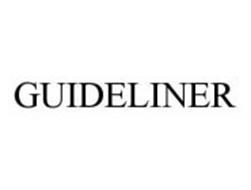

Marine Polymer was awarded an injunction in September but Hemcon was subsequently given a stay. However, the company could see upside if Marine Polymer’s injunction against competitor HemCon is enforced. Management cited competitive pricing pressure for Vascular Solution’s D-Stat Dry product. Hemostat Products: It appears that revenues will continue to be flat or declining in Vascular Solution’s hemostat product lines.Resolution of the litigation in VNUS’s favor would benefit Vari-Lase sales. As a result, Diomed is able to continue to undersell Vascular Solutions.


Litigation between VNUS and competitor Diomed is still ongoing. Vein Products: Hopes that Vascular Solution’s Vari-Lase product line revenue would improve as Covidien ( COV) subsidiary VNUS enforced patents against discount competitors have so far proved unfounded.Competition in these mature markets continues to eat away at margins. Hemostat products had revenue of $4.9 million, a Y/Y decline of -6%, while vein product had revenue of $2.5 million, a Y/Y decline of -12%. The poorer-than-expected performance was largely due to weak sales in the company’s hemostat and vein product lines. Other studies of drug-eluting stent thrombosis have produced similar findings.Vascular Solution’s ( NASDAQ: VASC) management reported revenue of $24.3 million in Q3 2011 versus consensus estimates of $25.0 million. In addition, narrower stents (≤2.75 mm in diameter before deployment) were more likely to be underexpanded. In a smaller study of IVUS findings from 50 patients, Taherioun and colleagues 6 noted suboptimal stent deployment in 11 patients (22%), even after adjunctive postdilatation with a noncompliant balloon stent underexpansion was noted in 7 of those 11 patients. 4 In a large retrospective study of post-PCI intravascular ultrasound (IVUS) findings in 7,484 patients, Cheneau and colleagues 5 identified 23 stented lesions in which subacute thrombosis occurred stents were underexpanded in 18 (78%). Thrombosis in underexpanded stents can be more severe and diffuse than in-stent restenosis and usually involves the stent's proximal part. 3, 4 Two major complications of stent underexpansion are acute or subacute stent thrombosis and in-stent restenosis. Stenting and completely dilating a complex calcified coronary artery lesion can be challenging and may result in stent underexpansion. At the patient's 3-month follow-up visit, he was doing well and had an LVEF of 0.40 to 0.45. The noncompliant balloon was then inflated at a pressure of 24 atm for 7 s, fully expanding the stent with a good final angiographic result ( Fig. Next, a new 3.5 × 12-mm NC Trek noncompliant balloon (Abbott Vascular) was placed on the Runthrough NS guidewire and advanced over the 2 BMW guidewires across the stent ( Fig. Consequently, the 6F GuideLiner catheter was retracted and exchanged for 2 Balance Middleweight (BMW) guidewires (Abbott Vascular), which were then maneuvered across the underexpanded stent. A 3.5 × 10-mm Flextome cutting balloon (Boston Scientific Corporation) was then maneuvered to the stent but could not be moved inside, despite aggressive support with the guidewire and 6F GuideLiner catheter. 1A), 70% in the ostial first diagonal branch, 30% in the proximal LCx, and 70% in the distal LCx, and a patent stent in the RCA.Ī second, unsuccessful attempt was made to fully expand the stent by inserting a 3.5-mm noncompliant balloon and inflating it at a pressure of 24 atm for 10 s ( Fig. The resulting coronary angiogram showed 30% stenosis in the distal left main coronary artery, 90% in the mid-to-distal left anterior descending coronary artery (LAD) ( Fig. Because the newly decreased LVEF was accompanied by acute decompensated heart failure, coronary angiography was performed after diuresis. An echocardiogram revealed a left ventricular ejection fraction (LVEF) of 0.35 to 0.40. A chest radiograph showed interstitial pulmonary edema. An electrocardiogram (ECG) revealed sinus rhythm, an old inferior myocardial infarction, and new anterior ST-segment depressions when compared with a baseline ECG. Laboratory evaluations revealed an elevated brain natriuretic peptide level of 1,277 pg/mL (normal, ≤450 pg/mL) and a normal troponin I level. Physical examination revealed normal vital signs, jugular venous distention, and rales at the base of the lungs. His medical history included coronary artery disease, type 2 diabetes, hypertension, hyperlipidemia, smoking, and myocardial infarction treated by PCI in the left circumflex coronary artery (LCx) 10 years previously and the right coronary artery (RCA) 12 years previously. A 69-year-old man presented with new-onset New York Heart Association (NYHA) class III functional status and shortness of breath of 3 weeks' duration.


 0 kommentar(er)
0 kommentar(er)
